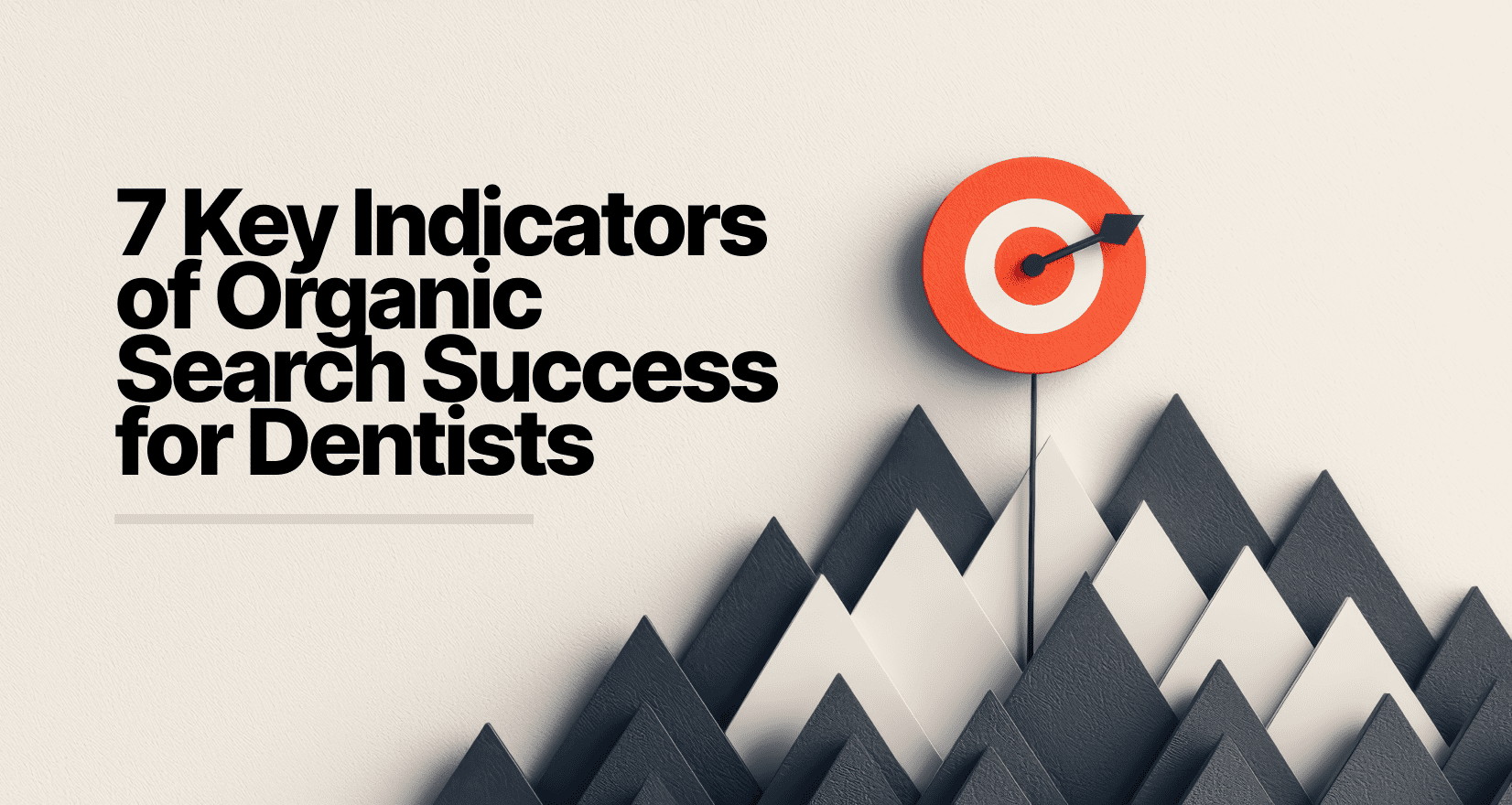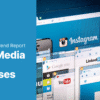How AI Writing Tools Are Transforming Dental Content Creation
You know that sinking feeling you get when you sit down to write a blog post about dental implants for the 500th time? Your brain goes blank, your fingers hover over the keyboard, and you find yourself wondering how many ways you can possibly explain the same procedure before you lose your mind.
The good news is that AI writing tools like Claude and ChatGPT are changing the game for dental content creation. The catch is that you need to know how to use them without turning into a content factory churning out soulless, generic articles.
Kevin Henry, Managing Editor of DrBicuspid.com and a 25-year veteran of dental publishing, recently joined Adrian Lefler on Byte Sized Podcast to discuss exactly how dental professionals can leverage AI writing tools while maintaining authenticity. With decades of experience editing dental content and training writers, Kevin has seen the industry evolve from 250-page monthly magazines to the AI-driven content landscape we’re navigating today.
The AI Content Slop Problem (And How to Avoid It)
Kevin shared a disturbing trend recently entering his inbox. As Editor-in-Chief of DrBicuspid.com, he receives submissions from dental professionals hoping to share their expertise with over 22,000 subscribers. Lately, though, some of those submissions smell suspiciously like pure AI output. And yeah, he can tell.
The telltale sign is a sea of articles that sound technically correct but completely hollow. Content that could have been generated by typing “write me a 500-word article on why we need to sell dental implants to patients” into ChatGPT and hitting enter. No voice. No personality. No reason for readers to trust the author’s expertise.
The Voice-to-Text Revolution: Your Commute Just Became Your Content Engine
Here’s where things get interesting. Kevin and Adrian both discovered the same game-changing workflow, and it’s so simple you’ll kick yourself for not doing it sooner.
The secret? Talk into your phone.
Kevin uses this method constantly as the beat writer for the Colorado Rockies. “It’s literally me and my phone talking to them,” he says about interviewing players in the clubhouse. “And I know once I leave the clubhouse, I’ve got to get up to the press box, send in my story before the game starts. It saves me an inordinate amount of time because while I’m walking from the clubhouse to the press box, it’s working behind the scenes to clean up the grammar, to clean up the quotes.”
He uses Otter for transcription, then airdrops the cleaned-up content from his phone to his computer. By the time he sits down, his quotes are ready to plug into articles.
Adrian takes a similar approach for his marketing content. He opens Claude, his preferred AI writing tool, and as he puts it, “word-vomits” for 2,000 words. Then he adds instructions to craft the words into a blog format structure with quotes and bullet-pointed lists.
The result is more authentic content that would have taken 10 hours to write by hand, finished in a fraction of the time.
Imagine a dentist stuck in traffic on the way home. Instead of listening to music or a podcast, they pull out their phone and tell a story.
“I had a patient come in today. They were dealing with severe dental anxiety because of a childhood trauma. Here’s their history. This is what we dealt with. This is how we solved the problem. And at the end of this appointment, she said to me, ‘I never thought I’d actually look forward to going to the dentist.'”
Just like that, you’ve got the foundation for a personable, genuine blog post that comes from a place of experience.
Building Your AI Writing Style Guide
Here’s an advanced technique that takes AI writing from good to genuinely authentic:
Create a personalized AI project with your unique style embedded.
Here’s how it works:
- Take a personality test (like DISC) and save the results
- Gather your authentic content (journal entries, past articles, video transcripts)
- Create a project in Claude (or your preferred AI tool)
- Upload these files to the project
- Have the AI create a writing style guide based on your materials
The style guide captures how you use metaphors, whether you’re ironic, your educational level, your sentence structure, everything that makes your writing yours.
Now when you word-vomit your ideas into that project, the AI doesn’t just organize your thoughts. It structures them in YOUR voice, using YOUR style patterns. The output is remarkably close to what you’d produce yourself, just much faster.
AI as Your Creative Partner (Not Your Replacement)
Both Kevin and Adrian emphasize using AI as a collaborative tool, not a replacement for human creativity. Kevin describes using AI as a “sounding board” when he gets stuck.
![[Byte Sized Podcast Ep. 15] The Editor's Truth: How AI Is Flooding Dental Publishing (And What Actually Works) Feat. Kevin Henry - AI,Content - My Social Practice - Social Media Marketing for Dental & Dental Specialty Practices My Social Practice - Social Media Marketing for Dental & Dental Specialty Practices - AI,Content](https://mysocialpractice.com/wp-content/uploads/2025/10/1-x-1-–-social-post–15-500x500.png)
This is fundamentally different from typing “write me an article about dental implants” and calling it done. It’s about maintaining human creativity and expertise while leveraging AI to overcome writer’s block, improve grammar, and structure content more efficiently.
“I think the biggest use of AI whenever it comes to journalism, whenever it comes to content creation today is start with your authentic self, but then absolutely let the computer, let AI help you forward,” Kevin says.
The Future of Dental Content Creation
Kevin sees massive opportunities ahead, particularly in video creation. AI-generated video is reaching the point where it looks genuinely real, which opens up incredible possibilities for dental practices to tell their stories visually.
YouTube, Instagram Reels, and TikTok videos consistently get pushed to the top of feeds. As AI makes video creation more accessible, dental practices that embrace these tools will dominate their local markets.
But here’s the underlying principle that won’t change: authenticity wins. The practices that use AI to amplify their genuine expertise, their real patient stories, and their unique approaches will crush competitors churning out generic content.
As Adrian discovered, if he were to rebuild My Social Practice from scratch today, the model would be simple: “Do a two-hour interview, video interview with the doctor and it’s done. You take that, you generate all the content for the site, all the blog articles, you can create automation to respond to reviews in the voice of the doctor. Everything can be generated from an authentic interview.”
No magic. No secret SEO tricks. Just authentic conversations, properly leveraged with AI tools.
Start With Your Voice, Let AI Amplify It
The dental professionals winning at content creation in 2025 aren’t the ones avoiding AI or the ones replacing human creativity with computers. They’re the ones using it strategically to multiply their authentic voice across more channels, more frequently, without burning out.
If you’re stuck writing the same dental implant article for the hundredth time, stop typing. Pull out your phone on your next commute and just talk. Tell a patient story. Share what frustrated you today. Explain the technique you’ve refined over 20 years that nobody else is doing quite the same way.
Then let AI help you turn that authentic content into something polished, SEO-optimized, and ready to publish. Your competitors are either avoiding AI entirely or letting it transform them into content robots. You’re going to do something smarter: use AI to be more authentically yourself, at scale.
In This Episode:
Kevin Henry, Editor-in-Chief at DrBicuspid.com
With more than 20 years in the dental publishing industry, Kevin Henry is the former group editorial director for Dental Products Report and managing editor for Dental Economics. Currently, he is the editor-in-chief for DrBicuspid.com. He has spoken to dental assistants throughout the world, in person and through the Dental Assistant Nation podcast series, reminding them of the important role they play every day in their practice. He is also certified as a DiSC trainer, helping dental practices learn how to understand each other better through personality assessments and training.
Adrian Lefler, CEO and Co-founder of My Social Practice
Adrian Lefler, CEO of My Social Practice, is a seasoned expert in the dental marketing industry with 14 years of experience. He is widely recognized for his engaging and informative presentations. Based in Suncrest, Utah, Adrian shares his life with his wife, four children, and a lively mix of pets. My Social Practice is a leading dental marketing company, and Adrian is passionate about helping dental professionals succeed in this dynamic field.
Frequently Asked Questions
How can I tell if my dental content sounds too much like AI?
Read it out loud. If it sounds like a textbook or corporate memo rather than a conversation with a colleague, it’s too AI-heavy. Kevin Henry, with 25 years of editing experience, can spot AI content immediately because it lacks “soul” and “human touch.” The fix? Start with your authentic voice (literally, by recording yourself talking), then use AI to structure and polish. Tools like Originality.AI can help detect AI-generated content, but your best detector is your gut feeling. If you wouldn’t talk that way to a patient, rewrite it. AI should amplify your voice, not replace it with generic dental jargon.
Can AI writing tools help my dental practice rank better on Google?
Yes, but only when used correctly. Google’s algorithms increasingly favor authentic, original content over generic articles. Even handwritten content can get flagged as AI-generated when it’s too similar to hundreds of other dental implant articles online. The solution is using AI to help structure unique content based on real interviews, patient stories, and your specific expertise. Tools like those from My Social Practice’s SEO services can help dental practices create content that includes doctor quotes, authentic case studies, and original insights that both Google and potential patients recognize as valuable. The key is originality plus optimization, not just keyword stuffing.
What's the biggest mistake dental practices make when using AI for content creation?
The biggest mistake is using AI as a replacement rather than a collaborator. Kevin Henry rejects submissions where dentists clearly just typed a prompt like “write me a 500-word article on dental implants” and submitted whatever came out. This creates soulless content that lacks expertise and authority. The right approach is starting with your authentic knowledge and expertise, then using AI to help structure, polish, and optimize that content. Think of AI as an extremely efficient editor and writing assistant, not as the author. Another common mistake is not following up: many dental practices try AI once, get mediocre results because they don’t know how to prompt effectively, and give up. Success requires learning the tools and refining your process over time.

![[Byte Sized Podcast Ep. 22] 100% of Dental Practices Will Be Targeted – Here's What Hackers Don't Want You To Know - AI,Content - My Social Practice - Social Media Marketing for Dental & Dental Specialty Practices hackers and dental practices](https://mysocialpractice.com/wp-content/uploads/2025/12/byte-sized_ep22.png)

![[Byte Sized Podcast Ep. 15] The Editor's Truth: How AI Is Flooding Dental Publishing (And What Actually Works) Feat. Kevin Henry - AI,Content - My Social Practice - Social Media Marketing for Dental & Dental Specialty Practices New call-to-action](https://no-cache.hubspot.com/cta/default/1942633/46e5c50e-9172-4068-8104-55f887411530.png)
![[Byte Sized Podcast Ep. 15] The Editor's Truth: How AI Is Flooding Dental Publishing (And What Actually Works) Feat. Kevin Henry - AI,Content - My Social Practice - Social Media Marketing for Dental & Dental Specialty Practices New call-to-action](https://no-cache.hubspot.com/cta/default/1942633/87651106-90bf-4f04-88ab-5c7eb7283f55.png)
![[Byte Sized Podcast Ep. 15] The Editor's Truth: How AI Is Flooding Dental Publishing (And What Actually Works) Feat. Kevin Henry - AI,Content - My Social Practice - Social Media Marketing for Dental & Dental Specialty Practices My Social Practice - Social Media Marketing for Dental & Dental Specialty Practices - AI,Content](https://mysocialpractice.com/wp-content/uploads/2025/10/Mask-group-18.png)
![[Byte Sized Podcast Ep. 15] The Editor's Truth: How AI Is Flooding Dental Publishing (And What Actually Works) Feat. Kevin Henry - AI,Content - My Social Practice - Social Media Marketing for Dental & Dental Specialty Practices Dental AI Tools with Adrian Lefler](https://mysocialpractice.com/wp-content/uploads/2024/07/Head-Shot_Adrian_Circle_Large-e1721666265743.png)

![[Byte Sized Podcast Ep. 22] 100% of Dental Practices Will Be Targeted – Here's What Hackers Don't Want You To Know - AI,Content - My Social Practice - Social Media Marketing for Dental & Dental Specialty Practices hackers and dental practices](https://mysocialpractice.com/wp-content/uploads/2025/12/byte-sized_ep22-100x100.png)


